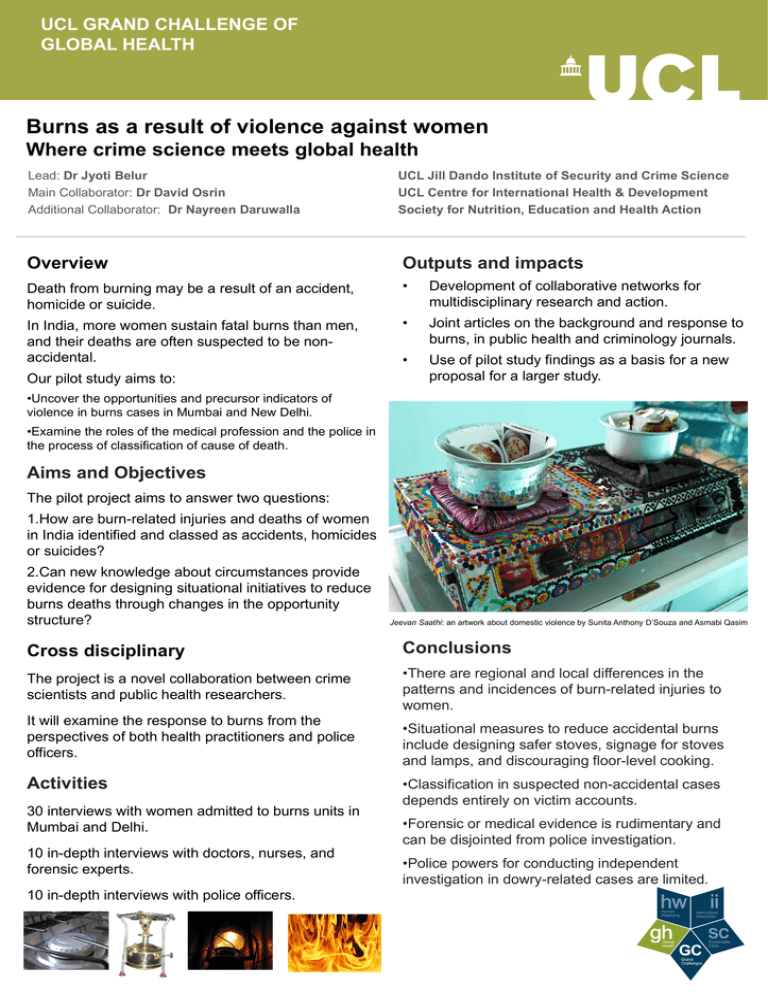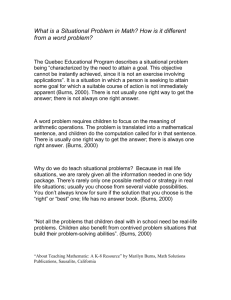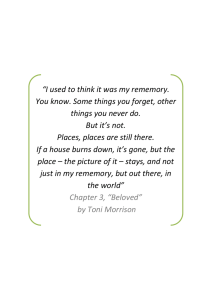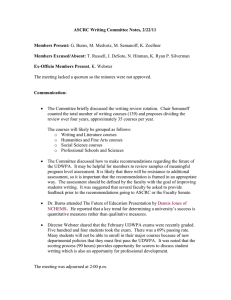Burns as a result of violence against women GLOBAL HEALTH
advertisement

UCL GRAND CHALLENGE OF GLOBAL HEALTH Burns as a result of violence against women Where crime science meets global health Lead: Dr Jyoti Belur Main Collaborator: Dr David Osrin Additional Collaborator: Dr Nayreen Daruwalla UCL Jill Dando Institute of Security and Crime Science UCL Centre for International Health & Development Society for Nutrition, Education and Health Action Overview Outputs and impacts Death from burning may be a result of an accident, homicide or suicide. • Development of collaborative networks for multidisciplinary research and action. In India, more women sustain fatal burns than men, and their deaths are often suspected to be nonaccidental. • Joint articles on the background and response to burns, in public health and criminology journals. • Use of pilot study findings as a basis for a new proposal for a larger study. Our pilot study aims to: •Uncover the opportunities and precursor indicators of violence in burns cases in Mumbai and New Delhi. •Examine the roles of the medical profession and the police in the process of classification of cause of death. Aims and Objectives The pilot project aims to answer two questions: 1.How are burn-related injuries and deaths of women in India identified and classed as accidents, homicides or suicides? 2.Can new knowledge about circumstances provide evidence for designing situational initiatives to reduce burns deaths through changes in the opportunity structure? Jeevan Saathi: an artwork about domestic violence by Sunita Anthony D’Souza and Asmabi Qasim Cross disciplinary Conclusions The project is a novel collaboration between crime scientists and public health researchers. •There are regional and local differences in the patterns and incidences of burn-related injuries to women. It will examine the response to burns from the perspectives of both health practitioners and police officers. •Situational measures to reduce accidental burns include designing safer stoves, signage for stoves and lamps, and discouraging floor-level cooking. Activities •Classification in suspected non-accidental cases depends entirely on victim accounts. 30 interviews with women admitted to burns units in Mumbai and Delhi. 10 in-depth interviews with doctors, nurses, and forensic experts. 10 in-depth interviews with police officers. •Forensic or medical evidence is rudimentary and can be disjointed from police investigation. •Police powers for conducting independent investigation in dowry-related cases are limited.






